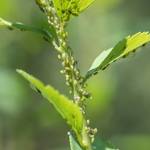
How to Grow Phacelia Seeds
Grow Guide #2950
Family: Boraginaceae
Binomial name: Phacelia tanacetifolia
Life Cycle: Annual
This 'How to Grow' guide details everything a home gardener needs to know to plant, grow and care for Phacelia (Phacelia tanacetifolia).
When to Sow Phacelia Seeds
Use the table below to identify the best time of year to sow phacelia seeds in your climate.
| JAN | FEB | MAR | APR | MAY | JUN | JUL | AUG | SEP | OCT | NOV | DEC | |
|---|---|---|---|---|---|---|---|---|---|---|---|---|
| Cool | ||||||||||||
| Temperate | ||||||||||||
| Sub-Tropical | ||||||||||||
| Tropical | ||||||||||||
| Arid |
Preparation
Phacelia plants are best grown in full sun. Choose a location that will receive at least 6 hours of full sun each day.
Phacelia plants need a well drained soil enriched with plenty of organic matter. Prepare soil by weeding it thoroughly, digging it over to loosen it and adding aged animal manure or compost. Keep the area free of weeds until planting. Learn more about preparing soil for planting here.
Phacelia plants commonly self-seed in the garden. Self-seeding plants drop seeds onto the soil at the end of the season that may germinate and grow without help the following season. Choose a position where new plants will be welcome. If you do not want phacelia to become established in your garden, deadhead plants before they can drop seed or grow them in containers.
How to Sow Phacelia Seeds
Phacelia seeds do not require any treatment (eg soaking, stratification) before sowing.
Seeds of phacelia germinate best when they are not exposed to light. Sow seeds at the recommended depth and cover with enough soil to exclude light. Alternatively, you can place a board or some black plastic over the seeds while they germinate, removing it as soon as possible after the seeds have sprouted.
Phacelia seeds grow best when they are sown directly into the garden.
- Sow seeds directly in the garden 5mm deep and 30cm apart.
- Keep soil moist but never wet or dry.
- Seeds should germinate in around 14-28 at a soil temperature of 12-16°C.
- Young seedlings will need protection from pests, pets and weather until they are established.
Phacelia is a half hardy crop. Mature plants will survive light frosts but seedlings need protection until they are established. Do not transplant seedlings or sow seeds outside until all danger of frost has passed.
Tip: Seeds of this variety can be slow to germinate. Take note of the expected germination time, be patient and follow the recommended depth and temperature guidelines closely for the best chance of success.
How to Grow Phacelia
Phacelia plants may need watering during the growing season. Water when the soil is dry about 5cm below the surface (test this by scratching away a little soil with your finger). Water deeply in the early morning or late afternoon. Avoid watering the leaves of plants to avoid fungal diseases. Learn more about watering here.
Phacelia plants will grow in nutrient-poor soils and do not need additional fertiliser during the growing season.
Phacelia plants should flower in approximately 90-110 days.
Common Problems when Growing Phacelia
Like all plants, phacelia is susceptible to some pests, diseases and other problems. Below is a list of the most common problems gardeners encounter when growing phacelia plants:
 Aphids are small (2-4mm long) sap-sucking insects that congregate on the new shoots or the undersides of leaves. They can cause leaves to wilt or become discoloured, and also excrete honeydew which can attract ants and other insect pests. To manage aphids, remove them by spraying with a garden hose, apply a soap or alcohol spray, or encourage predatory insects to your garden. Read more about aphids here.
Aphids are small (2-4mm long) sap-sucking insects that congregate on the new shoots or the undersides of leaves. They can cause leaves to wilt or become discoloured, and also excrete honeydew which can attract ants and other insect pests. To manage aphids, remove them by spraying with a garden hose, apply a soap or alcohol spray, or encourage predatory insects to your garden. Read more about aphids here. Slugs and snails are molluscs that feed on tender leaves and shoots, mostly at night, leaving slimy trails behind them. Control them by removing their hiding places, keeping free range poultry, collecting them by torchlight or by placing traps. Read more about slugs and snails here.
Slugs and snails are molluscs that feed on tender leaves and shoots, mostly at night, leaving slimy trails behind them. Control them by removing their hiding places, keeping free range poultry, collecting them by torchlight or by placing traps. Read more about slugs and snails here. Thrips are black, beige or white flying insects (<1.5mm) with larvae that suck tissue from leaves and petals, leaving behind very small white or transparent markings. While not usually causing serious damage, the marks affect the look of flowers and foliage and thrips can also transfer pathogens from one plant to another. Wash thrips from affected plants using a garden hose, encourage predatory mites and lacewings with companion planting, or spray with soap, eco-oil or neem oil.
Thrips are black, beige or white flying insects (<1.5mm) with larvae that suck tissue from leaves and petals, leaving behind very small white or transparent markings. While not usually causing serious damage, the marks affect the look of flowers and foliage and thrips can also transfer pathogens from one plant to another. Wash thrips from affected plants using a garden hose, encourage predatory mites and lacewings with companion planting, or spray with soap, eco-oil or neem oil.


.png)



